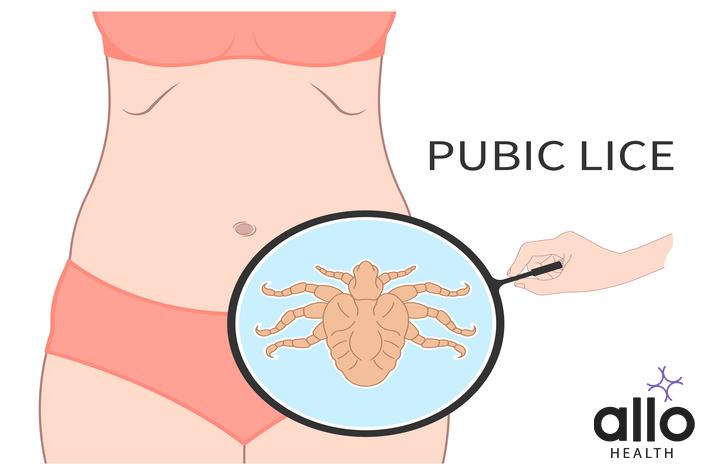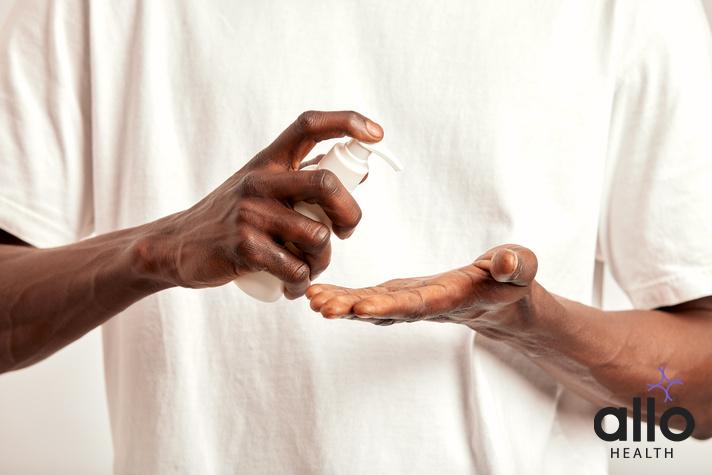What is Pubic Lice (Crabs)?

Allo Health is dedicated to personalized well-being, offering support and trusted information tailored to individual health goals. The platform emphasizes human-generated content, led by a distinguished medical team of experts, including physicians and sexual health specialists. Their commitment to credibility involves rigorous fact-checking, authoritative research, and continuous updates to ensure accurate, up-to-date information. Allo Health's unique approach goes beyond conventional platforms, providing expert-led insights and a continuous commitment to excellence, with user feedback playing a crucial role in shaping the platform's authoritative voice.

Dr Thanushree, has her MBBS from Kanachur Institute of Medical Sciences, Mangalore
Why This Was Upated?
Our experts continually monitor the health and wellness space, and we update our articles when new information became available.
Updated on 10 February, 2025
- Article was updated as part of our commitment to diversity, equity, and inclusion.
"The following blog article provides general information and insights on various topics. However, it is important to note that the information presented is not intended as professional advice in any specific field or area. The content of this blog is for general educational and informational purposes only.
Book consultation
The content should not be interpreted as endorsement, recommendation, or guarantee of any product, service, or information mentioned. Readers are solely responsible for the decisions and actions they take based on the information provided in this blog. It is essential to exercise individual judgment, critical thinking, and personal responsibility when applying or implementing any information or suggestions discussed in the blog."
Pubic lice, commonly known as “crabs,” are tiny insects that infest the pubic hair and genital area of humans. While they might not be a topic you hear about often, understanding what they are and how to deal with them is essential for maintaining personal health and hygiene. In this article, we’ll delve into what pubic lice are, how they spread, symptoms to watch out for, and effective treatment options.
What Are Pubic Lice?
Pubic lice are parasitic insects that primarily infest the coarse hair of the pubic area. However, they can also be found in other body hair, such as armpits, chest, abdomen, and even facial hair. These lice feed on human blood, and their presence can cause itching and discomfort.
How Do Pubic Lice Spread?
Pubic lice are usually transmitted through close physical contact with an infested person. This can occur during sexual activity, but it’s not the only way they spread. Sharing clothing, towels, or bedding with someone who has pubic lice can also lead to infestation. Unlike head lice, pubic lice cannot jump or fly, so direct contact is necessary for transmission.

Symptoms Of Pubic Lice Infestation
The most common symptom of pubic lice infestation is itching in the genital area. This itching is often intense and can worsen at night when the lice are most active. Other symptoms may include:
- Visible lice or their eggs (called nits) in the pubic hair.
- Blue spots or tiny blood spots on the skin caused by lice bites.
- Irritability or difficulty sleeping due to itching.
Diagnosing Pubic Lice
Diagnosing pubic lice usually involves a visual inspection of the affected area. A healthcare provider may use a magnifying glass to look for lice or their eggs. If pubic lice are found, treatment can begin immediately.
Treatment Options
Fortunately, pubic lice infestations can be treated effectively with over-the-counter or prescription medications. These treatments usually come in the form of lotions or shampoos that kill the lice and their eggs. It’s essential to follow the instructions carefully and to treat any sexual partners to prevent reinfestation.
In addition to medication, thorough cleaning of clothing, bedding, and personal items is crucial to prevent the spread of pubic lice. Washing infested items in hot water and drying them on high heat can help kill any remaining lice or eggs.

Prevention Tips
While pubic lice infestations can be uncomfortable, there are steps you can take to prevent them:
- Practice safe sex by using condoms and limiting your number of sexual partners.
- Avoid sharing clothing, towels, or bedding with others, especially if they have pubic lice.
- Perform regular checks of your pubic hair and genital area for signs of infestation.
Pubic lice, or crabs, are parasitic insects that infest the pubic hair and genital area. They spread through close physical contact and can cause itching and discomfort. However, with proper treatment and preventive measures, pubic lice infestations can be effectively managed. If you suspect you have pubic lice, don’t hesitate to consult a healthcare provider for diagnosis and treatment. Remember, maintaining good personal hygiene is key to preventing the spread of pubic lice and other sexually transmitted infections.








































